11 Vibrant Red Birds Found In Florida – A Close Look
Updated: 31 Mar 2024
40
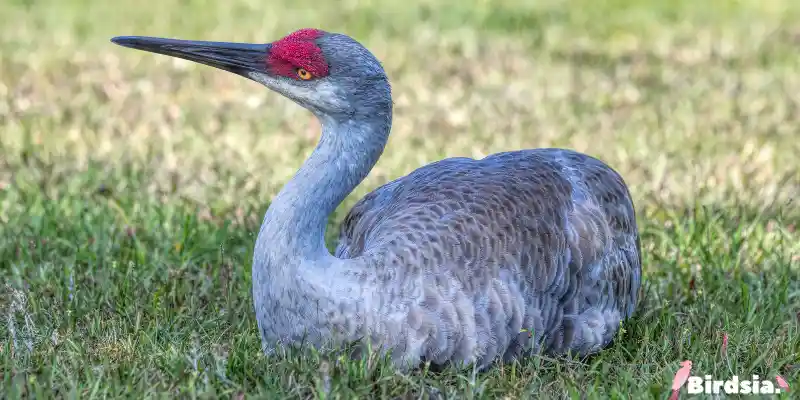
In Florida, there are lots of colorful birds, but the ones with bright red feathers are especially eye-catching! These red birds add a splash of color to Florida’s forests, marshes, and parks. In this guide, we’ll explore 11 special red bird species that live in Florida. From the cheerful songs of the Northern Cardinal to the graceful flights of the Roseate Spoonbill, each bird has its own story to tell. So, let’s take a closer look at these beautiful red birds and learn more about them!
Here is a list of the 11 beautiful red birds found in Florida:
1. Northern Cardinal:

The Northern Cardinal, a beloved Florida resident, is a small red bird known for its prominent crest. Males flaunt vibrant red plumage covering most of their bodies, along with a striking black face mask and throat.
Females, on the other hand, display olive-brown feathers with touches of red on their crest, wings, and tail. Both sexes sport a distinct red beak that adds to their allure.
These charming birds inhabit various habitats, including shrubby fields, forest edges, thickets, woodlands, swamps, parks, and residential areas.
Their range extends across the eastern, central, and southwestern United States, reaching into Mexico and Central America. In Florida, as in other regions, Northern Cardinals are year-round residents.
Their diet comprises insects, seeds, flower buds, and fruit, allowing them to thrive as adaptable and resourceful foragers in diverse environments.
Measurement of the Northern Cardinal (Cardinalis cardinalis):
- Length: 8.3–9.1 inches
- Weight: 1.5–1.7 ounces
- Wingspan: 10.2-12.2 inches
2. Scarlet Tanager:
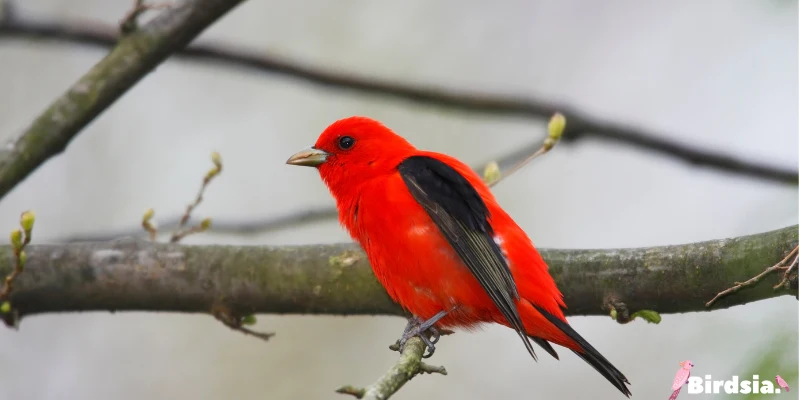
The male Scarlet Tanager is a breathtaking sight during the breeding season, boasting vibrant red plumage with black wings and tail. Outside of breeding, males and females sport a yellow-olive hue with black wings, while females have lighter wings.
These stunning birds inhabit various habitats, from forests to parks and residential areas.
Scarlet Tanagers are migratory, spending summers in the eastern United States and Canada before heading to Central America and parts of northern and western South America for winter.
In Florida, they pass through during migration in the fall and spring, offering birdwatchers a treat with their striking appearance.
Their diet mainly consists of insects, but they also enjoy flower buds and fruit, showcasing their diverse foraging habits.
Measurement of Scarlet Tanager (Piranga olivacea):
- Length: 6.3-7.5 inches
- Weight: 0.7-1.0 ounces
- Wingspan: 9.8–10.6 inches
3. Summer Tanager:

The Summer Tanager is a striking bird, with males displaying vibrant red plumage while females can range from yellow to orange. Both genders have pale beaks and darker wings.
During summer, they’re found in the southern US and northern Mexico, migrating to southern Mexico, Central America, and parts of North and Western South America for winter.
In Florida, they’re seen year-round but are most common during spring and fall migrations. They breed in the state’s upper regions during the summer.
They prefer habitats like open woodlands, riparian areas, and forests for breeding, and orchards, parks, and yards for foraging. In winter, they’re found in forest edges, woodlands, parks, and yards.
Their diet consists mainly of insects, especially bees and wasps, along with fruits and spiders, showcasing their adaptable feeding habits.
Measurement of Summer Tanager (Piranga rubra):
- Length: 6.3-7.5 inches
- Weight: 0.8-1.0 ounces
- Wingspan: 9.8–10.6 inches
4. House Finch:
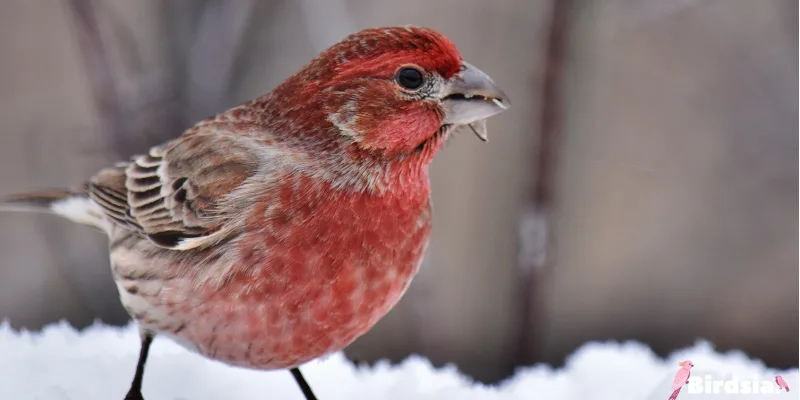
The House Finch, a delightful red bird, adds beauty to Florida’s landscapes. Males have gray-brown bodies with vibrant red on their heads, throat, chest, and rump. Their upperparts feature dark brown streaks, while the underside is whitish with brown streaks. Their bill is horn-colored.
Females have brown upperparts with dark streaks and whitish undersides with dark streaks. Some males may appear paler, leaning towards orange.
Adaptable to various habitats, House Finches thrive in semi-arid grasslands, chaparral, deserts, open forests, and urban areas.
Originally from the western US, Canada, and Mexico, they’ve spread eastward and are now common in the eastern US, Canada, and Hawaii.
In Florida, they’re mainly in the north but can be found statewide. While they mostly stay year-round, some northern individuals may migrate south.
They eat seeds, fruit, buds, and sometimes insects.
Measurement of House Finch (Haemorhous mexicanus):
- Length: 5.0-6.3 inches
- Weight: 0.6-1.0 ounces
- Wingspan: 8.0-9.5 inches
5. Purple Finch:
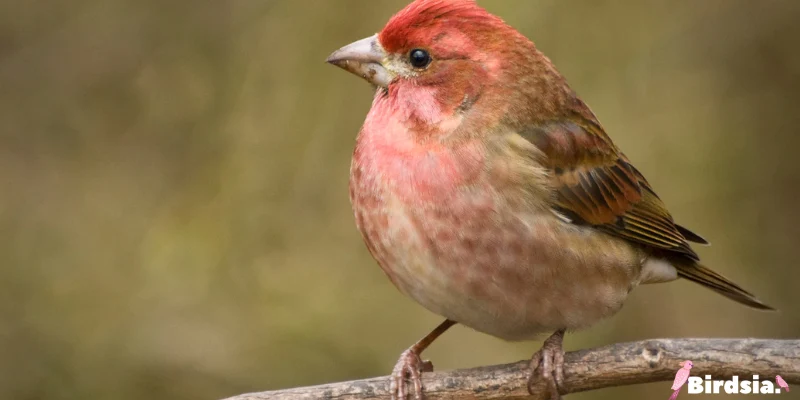
The male Purple Finch is a striking bird with a raspberry-red head, chest, and back, transitioning to brown on the wings and tail. Its rump carries the same red hue, with brown streaks on the back and white on the belly.
Females have a more subdued appearance, with a brown head and upper parts streaked with gray. Their underparts are whitish with prominent streaking, and their face has dark cheeks, a whitish eyebrow stripe, a pale mustache, and a dark throat border.
During the breeding season, they prefer forests and woodlands, but in winter, they can be found in various habitats like forest edges, fields, shrublands, parks, and yards.
Purple Finches in northern areas migrate south for the winter to places like northern Florida. Those in the northeastern US, southeastern Canada, and the west coast are more sedentary.
Their diet consists mainly of seeds, but they also eat buds, fruit, nectar, and sometimes insects.
Measurement of Purple Finch (Haemorhous purpureus):
- Length: 5.5-6.3 inches
- Weight: 0.8-1.0 ounces
- Wingspan: 9.1–10.2 inches
6. Vermilion Flycatcher:
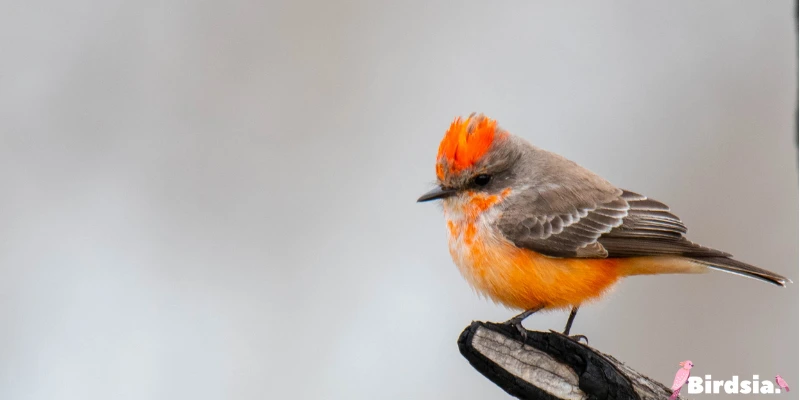
The male Vermilion Flycatcher looks stunning with bright red underparts, a red crown, and a brown face mask. Females are paler with streaked undersides and a grayish-brown upper body. They like open areas and eat insects.
Vermilion Flycatchers are found from the southern United States to southern South America. Some stay put all year, while others migrate to Mexico and the southeastern United States for the winter. In South America, some move north to Florida during the winter.
Measurement of the Vermilion Flycatcher (Pyrocephalus rubinus):
- Length: 5.5-6.3 inches
- Weight: 0.4-0.5 ounces
- Wingspan: 8.7-9.1 inches
7. Red-Headed Woodpecker:
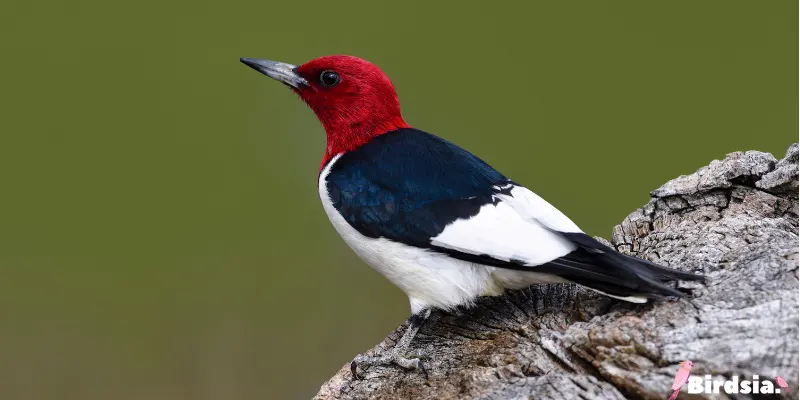
The Red-headed Woodpecker is indeed a striking species, easily recognizable by its vibrant red head, neck, and throat, contrasting beautifully with a white underside. Its black tail and upper side are adorned with large white wing patches and a white rump, adding to its stunning appearance.
They live in various places like forests, swamps, and even parks, feeding on nuts, fruits, insects, and sometimes small animals.
These woodpeckers are found year-round in the eastern United States, including Florida, but they move around a lot. In summer, they’re in the northern-central US and southern Canada, and they head south for winter.
Measurement of the Red-Headed Woodpecker (Melanerpes erythrocephalus):
- Length: 7.5–9.1 inches
- Weight: 2.0-3.2 ounces
- Wingspan: 16.5–18.9 inches
8. Red-Bellied Woodpecker:
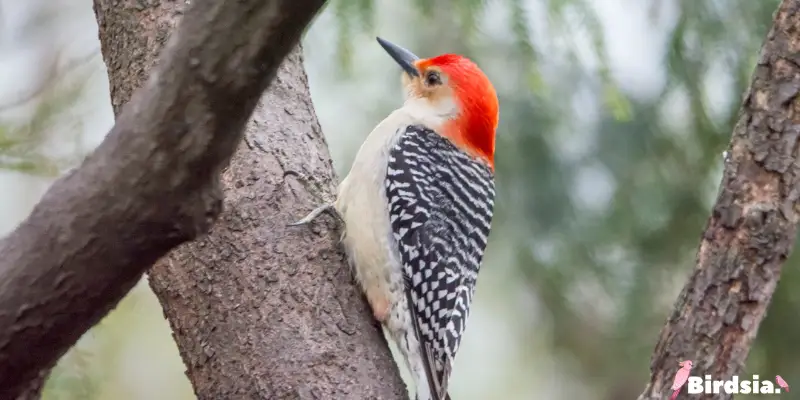
The Red-bellied Woodpecker is quite a sight, with a buffy chest and face, a whitish belly with a hint of red, and black and white barring on its back. Both males and females look similar, but males have a red nape and crown, while females have a red nape and gray crown.
These woodpeckers eat insects, fruits, nuts, seeds, and even small animals like lizards. They live in various habitats like forests, wetlands, and suburban areas across much of the eastern United States, including Florida, where they stay all year round.
Measurement of the Red-Bellied Woodpecker (Melanerpes carolinus):
- Length: 9.0-9.4 inches
- Weight: 2.0-3.2 ounces
- Wingspan: 13.0–16.5 inches
9. Painted Bunting:
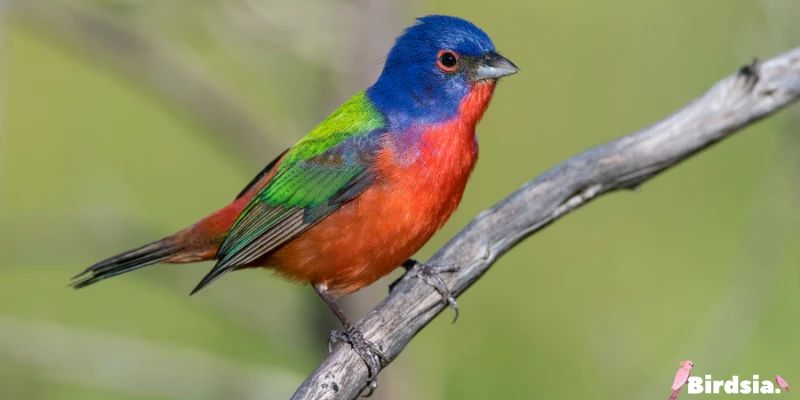
The Painted Bunting is a true masterpiece of nature, with males displaying a stunning combination of bright blue, vivid red, and vibrant greens on their plumage. Females are more subtle, with green and yellow tones.
These beautiful birds inhabit various habitats like forest edges, fields, and thickets. They have two populations with different migration patterns: one breeding in the south-central United States and northern Mexico, migrating south for winter, and another inhabiting the coastal southeastern United States in summer, wintering in southern Florida and the Caribbean.
In Florida, they’re mostly seen during migration, but breeding pairs can be found in the northern coastal regions. They primarily eat seeds but may also consume insects during the summer.
Measurement of Painted Bunting (Passerina ciris):
- Length: 4.7–5.9 inches
- Weight: 0.4-0.8 ounces
- Wingspan: 7.5–9.1 inches
10. Ruby-Throated Hummingbird:

The Ruby-throated Hummingbird is a delightful sight in Florida, known for its vibrant colors and agile flight. You can attract them to your yard with sugar water feeders or nectar-producing flowers.
In Florida, they’re typically seen in the spring and summer north of Tampa along both coasts. Along the coast and south of Tampa, you might spot them in the winter too, as some stay in southern Florida while others migrate to Central America.
Males have a vibrant red throat patch, while females are more understated in green and white. Watching them dart among flowers or hover near feeders is always a mesmerizing experience.
Measurement of the Ruby-Throated Hummingbird (Archilochus colubris):
- Length: 2.8-3.5 inches
- Weight: 0.1-0.2 ounces
- Wingspan: 3.1-4.3 inches
11. Common Redpoll:
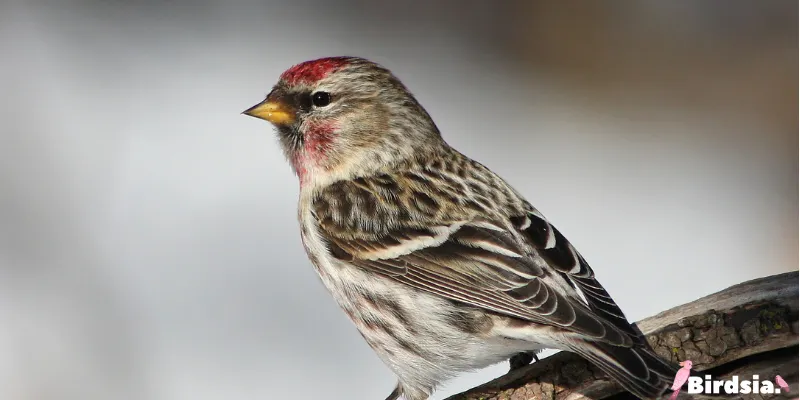
Common Redpolls are a rare sight for birdwatchers in Florida, making sightings a cause for celebration. They have red foreheads and pinkish breasts, and they feature brown and white plumage across their bodies.
While they’re uncommon in Florida, they’re more frequently found in northern states during the winter, occasionally venturing into central states. During winter, they employ unique survival tactics like tunneling into the snow for warmth and consuming large amounts of seeds daily.
To attract them to feeders, offering small seeds like nyjer or thistle can increase the chance of sightings, providing a wonderful opportunity to observe these charming birds up close.
Measurement of Common Redpoll (Acanthis flammea):
- Length: 4.3-5.1 inches
- Weight: 0.4-0.7 ounces
- Wingspan: 7.5–9.1 inches
Final Thought:
In conclusion, Florida is home to a dazzling array of red birds, each with its own unique beauty and charm. From the vibrant red plumage of the Northern Cardinal to the stunning hues of the Painted Bunting, these birds add vibrancy to Florida’s landscapes. Whether you’re birdwatching in parks, forests, or your own backyard, keep an eye out for these colorful avian residents.
Exploring Florida’s avian diversity is not only enjoyable but also a wonderful way to connect with nature and appreciate the beauty of our feathered friends. So grab your binoculars and camera, head outdoors, and see how many of these red birds you can spot on your next adventure in the Sunshine State!
What red bird lives in Florida?
Several red birds live in Florida, including the Northern Cardinal, Scarlet Tanager, Summer Tanager, House Finch, Purple Finch, Vermilion Flycatcher, Red-Headed Woodpecker, Red-Bellied Woodpecker, Painted Bunting, Ruby-Throated Hummingbird, and occasionally the Common Redpoll. Each of these birds contributes to the vibrant avian diversity of Florida with their striking red plumage.
What do Florida red birds eat?
Florida red birds have diverse diets depending on their species. Generally, they consume a variety of food items, such as insects, seeds, fruits, flower buds, nectar, and sometimes small animals like lizards. For example, Northern Cardinals primarily eat insects, seeds, flower buds, and fruits, while Ruby-Throated Hummingbirds primarily feed on nectar from flowers or sugar water from feeders. Each species has its own feeding preferences and behaviors.
What small bird has a red head in Florida?
The House Finch has a red head, breast, and rump, with a brown back and wings lacking red coloring. Females have blurrier streaks and grayer undersides compared to the other two species.
What kind of bird has a red throat in Florida?
The Ruby-throated Hummingbird, Florida’s smallest bird, boasts an iridescent green back, with males flaunting a fiery red throat. Most year-round residents of central and south Florida are found in a wide variety of habitats.
Please Write Your Comments